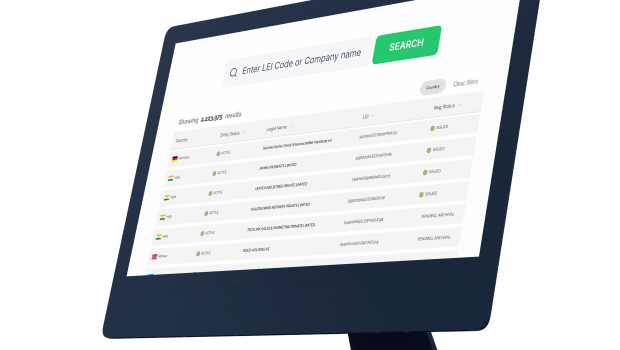The Role of LEI Codes in Enhancing Transparency in Public Institutions
In a world increasingly driven by data and transparency, public institutions are under growing scrutiny to uphold standards of openness and accountability. One pivotal tool in this quest for transparency is the Legal Entity Identifier (LEI). This unique 20-character alphanumeric code enables clear and precise identification of global legal entities participating in financial transactions. This discourse delves into the multifaceted role of LEI codes in enhancing transparency within public institutions based on LEI Lookup, highlighting their significance in fostering a more transparent, efficient, and reliable financial ecosystem.
1. Strengthening Financial Transparency:
The primary role of LEI codes in public institutions is to reinforce financial transparency. By uniquely identifying entities, LEIs clarify who is who and who owns whom in financial markets. This is crucial in tracking transaction flows and uncovering layers in complex corporate structures, thereby mitigating risks associated with opacity, such as fraud and money laundering.
2. Facilitating Regulatory Compliance:
Regulatory bodies worldwide are increasingly mandating the use of Legal Entity Identifiers. For public institutions, LEIs simplify compliance with various financial reporting requirements. They help streamline reporting processes, ensuring that entities are accurately represented in public records. This uniformity in identification aids regulators in monitoring and analyzing financial data more effectively, contributing to a more stable financial environment.
3. Enhancing Risk Management:
LEIs play a pivotal role in risk management within public institutions. By providing a clear view of the legal entities involved in transactions, LEIs help accurately assess counterparty risks. This is particularly important for public entities engaged in complex financial activities, enabling them to make informed decisions and mitigate potential financial disruptions.
4. Promoting Market Integrity:
Legal Entity Identifiers contribute significantly to maintaining the integrity of financial markets. They help prevent market abuse and fraudulent activities by ensuring that entities are easily identifiable. This level of transparency is essential for maintaining public trust in financial systems, an important aspect for public institutions that operate within these markets.
5. Improving Operational Efficiency:
Beyond risk and compliance, Legal Entity Identifiers enhance operational efficiency within public institutions. LEIs reduce the complexity and cost associated with data reconciliation and aggregation by standardizing entity identification. Such a streamlined approach saves time and resources and enhances financial data quality and reporting.
6. Facilitating Global Transactions:
Legal Entity Identifiers serve as a universal language for entity identification across borders in an increasingly interconnected world. For public institutions engaged in international transactions, LEIs simplify cross-border financial interactions. They enable institutions to navigate different regulatory environments more seamlessly, fostering global cooperation and financial integration.
7. Supporting Data Analysis and Decision-Making:
Finally, LEIs are instrumental in data analysis and strategic decision-making within public institutions based on LEI Lookup. The comprehensive data LEIs provide, including entity ownership and structure, enriches the quality of financial analysis. This improved data quality supports more strategic, data-driven decision-making, allowing public institutions to serve their stakeholders better.
Finally
Integrating Legal Entity Identifiers into the operational fabric of public institutions marks a significant stride towards a transparent and accountable financial landscape. LEIs streamline regulatory compliance and risk management and fortify financial integrity and operational efficiency. As the global financial ecosystem continues to evolve, public institutions’ adoption and implementation of LEI codes will remain a mainspring in the pursuit of transparency and reliability. In this journey, LEIs are more than just codes; they are vital tools that shine a light on the intricate pathways of global finance, guiding public institutions towards a future marked by clarity, trust, and openness.
Tweet









































